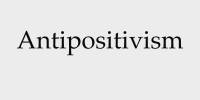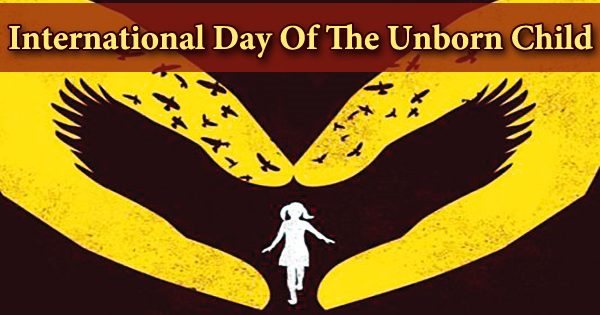Overview
Average socio-economic condition represents the development status of a country. Usually three variables – income, education and occupation are assessed to determine the socio-economic status of an individual or a family. Bangladesh is a developing country with unsatisfactory socio-economic condition. However, it is different, comparatively better, in case of the participants of 134 FTC. We analyzed their socio-economic status. Our major findings include a) income of the people is not satisfactory enough, but their social status is prestigious, b) participants usually come from educated families, c) household status of the participants are not satisfactory, and d) participants are eager to have further study.
General Introduction
Socioeconomic condition refers to an economic and sociological combined measure of a person’s work experience and of an individual’s or family’s economic and social position in relation to others, based on income, education, and occupation. It is important to assess the socioeconomic condition of the population to find out the scopes for improvement of a country.
Being a developing country, Bangladesh has many socio-economic problems. A large portion of our population is unemployed. It is well recognized that education is one of the key elements for the improvement of the socioeconomic condition. This study is focused on the social, economical and educational background the BCS cadres came to NAEM for foundation training. We conducted a survey on the socioeconomic variables of the participants of the 134 FTC.
Statement of the Problem
The socio-economic condition of Bangladesh is not satisfactory. The job opportunity in Bangladesh is very limited. Teaching is a honorable profession but the salary structure and other facilities are below the mark. On the other hand, there is negative attitude about teaching profession in our country. For this reason the teachers are not interested to do their duties properly. To ensure the quality education in our country the salary and other facilities of the teachers must be increased.
Rationale of the Study
Bangladesh is a developing country with a large number of people. The overall socio-economic condition of Bangladesh is not satisfactory. The literacy rate, expected life expectancy, income level is below the mark. To meet the challenge of Digital Bangladesh, truly empowered knowledge based society should be established. That is why I have selected to conduct a research study on this topic.
Objectives of the Study
As a consequence of the above background the main objective of the study is to investigate the socio-economic condition of the foundation trainee of 134 FTC conducted by NAEM. This study however covers the investigation of some problems of the participants of 134 FTC. This might not represent the overall situation of the participants of 134 FTC. The objectives of the study are as follows:
a) To figure out the social, educational and economical status of the participants.
b) To figure out the social and educational status of the participants’ families.
c) To analyze and discuss the results of the study.
Conceptual Framework
Participant /Trainee:
A person engaged in BCS general education cadre or technical education cadre needs to receive four months Foundation Training Course in National Academy for Educational Management (NAEM). In this regard participant means the person receiving training in 134 FTC conducted by NAEM.
Scope of the term paper
This term paper has been prepared as a particular fulfillment of the foundation training of 134th batch of NationalAcademy for Educational Management. This research oriented study describes the socio-economic conditions of the participants of 134 FTC of NAEM, Dhaka. It covers the study of some participants. It might not represent the overall social and economic status of the people of education cadre. However, it might have importance for further studies for planning and development of the people of education cadre.
Review of Related Literature
Socioeconomic status (SES) is an economic and sociological combined total measure of a person’s work experience and of an individual’s or family’s economic and social position in relation to others, based on income, education, and occupation. When analyzing a family’s SES, the household income, earners’ education, and occupation are examined, as well as combined income, versus with an individual, when their own attributes are assessed.
Usually three variables are assessed to determine the socio-economic status of an individual or a family – 1) income, 2) education and 3) occupation. Low income and little education have shown to be strong predictors of a range of physical and mental health problems, ranging from respiratory viruses, arthritis, coronary disease, and schizophrenia. These may be due to environmental conditions in their workplace, or in the case of mental illnesses, may be the entire cause of that persons social predicament to begin with.
Low income families focus on meeting immediate needs and do not accumulate wealth that could be passed on to future generations, thus increasing inequality. Families with higher and expendable income can accumulate wealth and focus on meeting immediate needs while being able to consume and enjoy luxuries and weather crises.
Education also plays a role in income. Higher levels of education are associated with better economic and psychological outcomes (i.e.: more income, more control, and greater social support and networking).
Occupational prestige as one component of SES, encompasses both income and educational attainment. Occupational status reflects the educational attainment required to obtain the job and income levels that vary with different jobs and within ranks of occupations. Additionally, it shows achievement in skills required for the job. Occupational status measures social position by describing job characteristics, decision making ability and control, and psychological demands on the job. Occupation is the most difficult factor to measure because so many exist, and there are so many competing scales.
The socio-economic condition of Bangladesh is a very popular topic on which significant number of papers, articles and editorials are available. However, research work on “A Study on the Socio-Economic Condition of the Participants of 134 FTC at NAEM,” is not enough. In this research work structured questionnaire method was used for data collection. It may be the shortage of time that made this study report not to have much information about the socio-economic condition of the foundation trainee of 134 FTC conducted by NAEM, Dhaka. However, some papers, journals and books helped me a large extent to write this paper.
General methodology
In this research work, a general survey method was used for data collection.
Participant selection and sampling
Participants were randomly selected from 134th batch of FTC of NAEM, NAEM Road, Dhanmondi, Dhaka-1205.
Sample size
A total of 44 participants were chosen for the present study. All of them are from 134 FTC of NAEM.
Questionnaire Design and Data Collection
Structured questionnaire related to socio-economic condition of the participants was used. A sample questionnaire used in this study has been attached in Annexure 1 of the term paper. Only the primary data was elicited through informal interview and open group discussion.
Data Analysis
Collected data was analyzed and manipulated by mathematical and statistical method. Beside these, some information was accumulated from Bangladesh Bureau of Statistics, research articles and internet web sites for comparison of the gathered information.
Limitations of the study
Although enough efforts were put on, there were some unavoidable limitations to prepare this term paper. These are as follows:
- The major limitation of the study was inadequate time limit. For this reason it was difficult to find out a concrete picture of socio-economic status of the participants.
- The sample size was comparatively small, which may not provide a true representation of the socio-economic status of the people of Bangladesh.
- Some participants were not willing to provide information related to their income, expenditure and life style.
- Necessary research reference was inadequate.
- Up date information or report in the relevant field in NAEM library was not found to compare the research findings.
Data Analysis, Interpretation and Presentation
This study is based on the survey on the participants. In order to find out the true and complete socio-economic condition of the participants, a set of questionnaire has been chosen in a way so that it can find out both the status and the driving factors for it. The profession and income or salaries are important indicators for socio-economic status. Housing patterns are also notable sign of an individual’s social position. Besides, educational qualification is an important determining factor behind socio-economic status. The outcome of the data collected from the trainees of 134 FTC has been summarized below.
Table 1: Profession of the participants’ parents
Profession | Percentage (%) | |
Father | Mother | |
| Service | 52.27 | 11.36 |
| Business | 11.36 | 0 |
| Agriculture | 20.45 | 4.55 |
| Housewife | – | 72.73 |
| Others | 15.91 | 11.36 |
| Total | 100 | 100 |
From Table 1, Fig 1 and Fig 2, it is apparent that most of the participants’ fathers are service holder which signifies that the service holder fathers encourage and prepare the children for government service. It is also clear that the percentage of women in job is very low, most of them are housewives (72.73%).
Table 2: Educational status of the participants’ parents
| Education level | Percentage (%) | |
Father | Mother | |
| Graduate or higher | 52.27 | 27.27 |
| SSC-HSC | 27.27 | 31.82 |
| Class VI-X | 20.45 | 40.91 |
| Class I-V | 0 | 0 |
| Illiterate | 0 | 0 |
| Total | 100 | 100 |
It is clear from Table 1, Fig 3 and Fig 4 that the higher the education rate of the parents, the higher the probability of becoming a government service holder. It is important to note that none of the participants’ parents are illiterate.
Table 3: Number of siblings of the participants
Sibling member | No. of participants | Percentage (%) |
1-2 | 16 | 36.36 |
3-4 | 14 | 31.82 |
4+ | 14 | 31.82 |
Total | 44 | 100 |
Table 4: Educational status of the participants’ siblings
| Educational level | Number of siblings | Percentage |
| Graduate or higher | 102 | 68.92 |
| SSC-HSC | 35 | 23.65 |
| Class VI-X | 7 | 4.73 |
| Class I-V | 2 | 1.35 |
| Illiterate | 2 | 1.35 |
| Total | 148 | 100% |
Table 5: Profession of the participants’ siblings
Profession | No. of Siblings | Percentage |
| Govt. Service | 35 | 44.30 |
| Private Service | 26 | 32.91 |
| Business | 11 | 13.92 |
| Agriculture | 2 | 2.53 |
| Others | 5 | 6.33 |
| Total | 79 | 100% |
From Table 4 and Fig 6, it is evident that the government service holder comes mostly from the educated families. Almost 70 percent of the siblings completed at least graduate level education. It is also clear from Table 5 and Fig 7 that although most of the siblings are government service holder, private jobs are being popular in the current generation.
Table 6: Marital Status
Marital Status | No. of Participants | Percentage |
| Married | 30 | 68.18 |
| Unmarried | 14 | 31.82 |
| Total | 44 | 100% |
Table 7: Profession of the spouse
Profession | No. of Participants | Percentage |
| Service | 21 | 70.00 |
| Business | 3 | 10.00 |
| Student | 2 | 6.67 |
| Others | 4 | 13.33 |
| Total | 30 | 100% |
Table 8: Educational Status of the participants’ spouse
| Educational level | Number of siblings | Percentage |
| Graduate or higher | 17 | 56.67 |
| SSC-HSC | 11 | 36.67 |
| Class VI-X | 2 | 6.66 |
| Class I-V | 0 | 0 |
| Illiterate | 0 | 0 |
| Total | 30 | 100% |
Table 9: Number of offspring of the participants
Offspring member | Number of participants | Percentage |
0 | 18 | 40.91 |
1-2 | 10 | 22.73 |
3-4 | 2 | 4.55 |
4+ | 0 | 0 |
Total | 30 | 68.18% |
It is easily understandable from Table 6-8 and Fig 8-10 that the people now prefer educated and service holders as their life-partner. It is very apparent from the comparison of Fig 11 and Fig 5 that people now prefer small families to big ones.
Table 10: Monthly income of the participants
| Monthly income (Tk.) | Number of participants | Percentage |
| 10,001-15,000 | 0 | 0 |
| 15,001-20,000 | 40 | 90.90 |
| 20,001-25,000 | 2 | 4.55 |
| 25,000 + | 2 | 4.55 |
| Total | 44 | 100% |
Table 11: Satisfaction about current income
| Satisfaction | Number of participants | Percentage (%) |
| Happy | 21 | 47.73 |
| Unhappy | 23 | 52.27 |
| Total | 44 | 100% |
Table 12: Monthly savings of the participants
| Monthly saving (Tk.) | Number of participants | Percentage |
| 00 | 11 | 25.00 |
| 1000-5000 | 28 | 63.64 |
| 5001-10000 | 5 | 11.36 |
| 10000+ | 0 | 0 |
| Total | 44 | 100% |
Monthly income is directly related with an individual’s socio-economic condition. These are the most important parameter to analyze his/he socio-economic status. It is clear from Table 10-12 and Fig 12-14 that monthly income of almost all the trainees is within the range from Tk 15,001.00 to Tk 20,000.00 and greater portion (52.27%) is not happy with it. It is also obvious that most of the people (75%) save a little portion of their income for future.
Table 13: Income source other than salary
| Source of income | Number of participants | Percentage |
| Private Tuition | 5 | 11.36 |
| Business | 4 | 9.09 |
| Agriculture | 0 | 0 |
| Other | 11 | 25.00 |
| Total | 20 | 45.45% |
Table 14: Nature of property
| Nature | Number of participants | Percentage |
| Agricultural Land | 11 | 25.00 |
| House | 9 | 20.45 |
| Flat | 2 | 4.55 |
| Others | 7 | 15.91 |
| Total | 29 | 65.91% |
From Table 13-14 and Fig 15-16, it is clear that significant portions of the government service holders (45.45%) are engaged in second job, a large portion (34.09%) do not have any property.
Table 15 : Housing pattern
Housing pattern | No. of Participants | Percentage |
| Own house in town | 12 | 27.27 |
| Rent house in town | 12 | 27.27 |
| Own house in village | 18 | 40.91 |
| Others | 2 | 4.55 |
| Total | 44 | 100% |
Table 15 shows that most of the participants (40.91%) have their house of brick wall in village and 27.27% participants live in rented house in town.
Table 16: Institution of the last degree of the participants
| Institution | Number of participants | Percentage (%) |
| PublicUniversity | 33 | 75.00 |
| NationalUniversity | 11 | 25.00 |
| PrivateUniversity | 0 | 0 |
| Foreign University | 0 | 0 |
| Total | 44 | 100% |
Table 17: Aim for higher degree
| Name of degree | Number of participants | Percentage (%) |
| Ph. d. | 35 | 79.55 |
| M. Phil. | 5 | 11.35 |
| Foreign degree | 2 | 4.55 |
| No commends | 2 | 4.55 |
| Total | 44 | 100% |
Table 16-17 and Fig 18-19 show that most of the participants (75%) obtained the last degree from public universities while a significant portion (25%) obtained it from the national university. It is a very good sign that almost everybody is willing to have further degree.
Table 18: Thinking about social status
| Thinking | Number of participants | Percentage (%) |
| Happy | 37 | 84.09 |
| Not Happy | 7 | 15.91 |
| Total | 44 | 100% |
It is a very good sign that whatever the financial status, the government service holders are satisfied with their social status. Government service is usually considered as a very prestigious job which may be the vital factor behind this situation.
Major Findings
- Most of the participants are not happy with their financial status. However, most of them are satisfied with their social status.
- The average income level of the government service holders is not very high. However, people try to save a portion from this although the amount is very low.
- Most of the government service holders grew up in educated environment.
- Service holder parents encourage their children for the government services.
- Educated people prefer educated life partners.
- A significant portion of the trainees do not own any house or agricultural land.
- Almost everybody is willing to go for further study.
- The government service holders are aware of family planning and as a result the family size is decreasing.
Recommendations
- Basic payment should be increased to increase the satisfaction level of the government service holders.
- It is strongly recommended to increase the house-hold opportunities. House loans with low interest can be provided for this purpose.
- The scopes for further study and professional training for the participants should be arranged both at home and abroad.
- Government should take necessary steps to increase the rate of higher education.
Conclusion
In this study, we assessed the socio-economic condition of the participants of 134 FTC. We found that the socio-economic condition of the participants is better than average situation in Bangladesh. This result is very much expected, because well-educated, meritorious and conscious citizens get opportunity to join the government service. However, the participants are not satisfied with their financial condition. Their household status is not also satisfactory. It is noteworthy that even though the financial and household status is not up to mark, the participants are happy with their social status. Government should take proper initiative to increase the socio-economic condition of the government service holders.
















